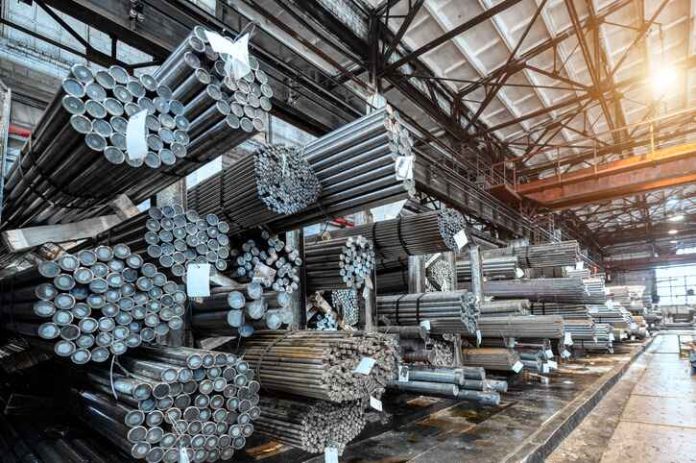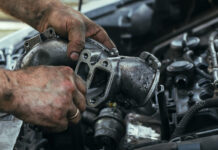Steel reinforcement is an extremely common and essential element of concrete structures all over the world. However, with the constant drive to reduce greenhouse gas emissions, and the rising costs of development, the construction industry needs to be sure it is using materials that align with these goals closely. So how does steel rebar stack up?
What are the advantages of steel reinforcement in modern construction? How does it contribute to the efficiency, flexibility, and sustainability of concrete structures? Let’s take a closer look.
Efficiency
One of the main advantages of steel reinforcement (such as that provided by suppliers like Heaton Manufacturing Ltd.) is that it enhances the efficiency of concrete structures in terms of material use, construction time, and performance. Steel reinforcement allows for the use of less concrete material by reducing the cross-sectional area and weight of the structural members. This results in lower material costs and transportation costs, as well as less environmental impact.
Steel reinforcement also reduces the construction time by enabling faster and easier placement of concrete. Steel reinforcement can be prefabricated into various shapes and sizes according to the design specifications, and can be easily cut, bent, and welded on site. Deformed rebar reinforcement also provides a good bond with concrete due to its ribbed surface, which ensures composite action between the two materials.
Moreover, rebar improves the performance of concrete structures by increasing their strength, stiffness, durability, and resilience. Carbon steel reinforcement can resist high tensile and shear stresses that non-reinforced concrete cannot withstand. Steel reinforcement also increases the stiffness of concrete structures by reducing deflections and deformations under load. This versatile material also enhances the durability of concrete structures by protecting them from corrosion, fire, and chemical attacks.
Flexibility
Another advantage of steel reinforcement is that it provides flexibility for concrete structures in terms of design, function, and adaptation. Rebar allows for a wide range of design possibilities for concrete structures, as it can be shaped into various forms and configurations to suit different architectural styles and structural requirements. Architects can control the loading of different structural elements and provide additional strength where needed to allow for less conventional designs. Steel reinforcement can also be used to create complex geometries and curves that may be impossible to achieve with plain concrete.
Steel rebar enables concrete structures to perform multiple functions and serve different purposes. For example, rebar can be used to create prestressed concrete structures that can span long distances without intermediate supports, such as bridges, beams, and slabs. Steel reinforcement can also be used to create reinforced concrete structures that can support heavy loads and resist dynamic forces, such as columns, walls, and foundations.
Sustainability
A third advantage of steel reinforcement is that it contributes to the sustainability of concrete structures in terms of environmental impact, social benefit, and economic value by decreasing their material consumption, energy consumption, carbon footprint, and waste generation. According to worldsteel.org, steel production accounted for 7% of global carbon dioxide emissions in 2019 , but steel recycling saved 1.8 billion tonnes of carbon dioxide emissions .
Steel reinforcement is often produced from recycled steel scrap which reduces the need for mining new iron ore and coal. Rebar rods also require less energy to produce than other reinforcing materials such as fibre-reinforced polymers (FRPs) or glass-fibre-reinforced polymers (GFRPs).
On top of this, rebar also:
- Emits less carbon dioxide than other reinforcing materials during its production and transportation, and;
- Generates less waste than other reinforcing materials during its fabrication and installation.
There are also a number of social benefits that steel rebar reinforcement provides for concrete structures; improving their safety, comfort, and aesthetics. Steel reinforcement enhances the safety of concrete structures by making them more resistant to natural disasters such as earthquakes, hurricanes, floods, and fires. Steel reinforcement also improves the comfort of concrete structures by reducing noise transmission, thermal fluctuations, and moisture infiltration. Steel reinforcement also improves the aesthetics of concrete structures by allowing for more creative and expressive designs that can blend with or contrast with the surrounding environment.
Finally, steel reinforcement adds economic value to concrete structures by increasing their lifespan, functionality, and profitability. According to a study by McKinsey & Company, steel-intensive buildings have a 20% lower life-cycle cost than those with other materials. Steel reinforcement extends the lifespan of concrete structures by preventing or delaying their deterioration due to mechanical or environmental factors. It also increases the functionality of concrete structures by enabling them to perform better under various loads and conditions. Then there’s the profitability side of things. Rebar aids this by reducing the maintenance costs of concrete structures and ultimately increases their resale value.
Steel reinforcement is a vital component of modern construction that offers many advantages for concrete structures. By improving their material use, construction time, performance, design possibilities, functionality, adaptation, environmental impact, social benefit, and economic value, steel reinforcement enhances the efficiency, flexibility, and sustainability of concrete structures. Therefore, civil engineers and contractors who want to build durable, versatile, and eco-friendly concrete structures should consider steel reinforcement as a smart and reliable choice.
Disclaimer: This article contains sponsored marketing content. It is intended for promotional purposes and should not be considered as an endorsement or recommendation by our website. Readers are encouraged to conduct their own research and exercise their own judgment before making any decisions based on the information provided in this article.




































































